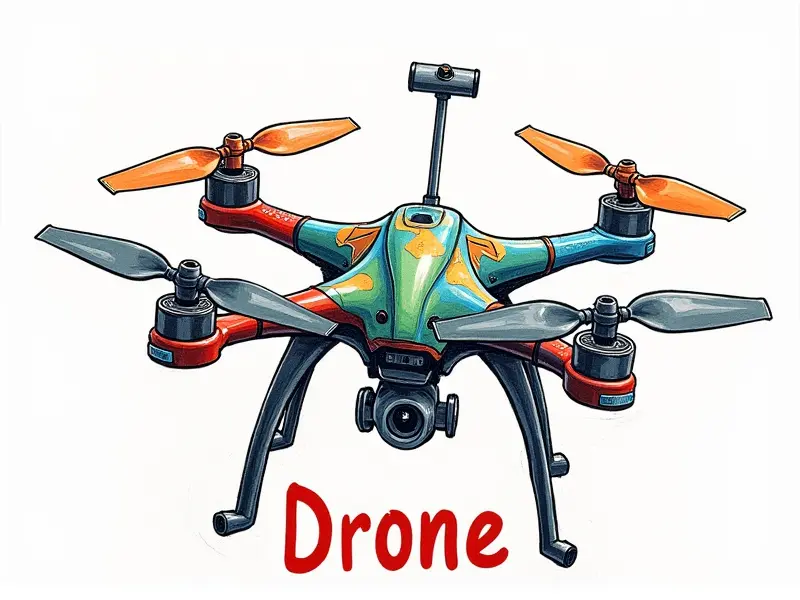How many cells in a battery?

The number of cells in a battery is crucial for determining the performance, flight time, and overall efficiency of your RC vehicle. Whether you're flying drones, FPV racing drones, RC planes, or RC helicopters, choosing the right cell count can make all the difference.
Choosing the Right Number of Cells for Your Drone
The number of cells in a battery directly impacts the performance and capabilities of your drone. For beginners, starting with fewer cells (such as 3S) provides better power-to-weight ratio and easier handling. As you progress, consider moving to higher cell counts like 4S or even 6S for increased speed and range.
Optimal Cell Count for FPV Racing Drones
FPV racing drones demand high performance with quick response times and sustained speeds. A popular choice is the 3S battery, offering a balance between power and agility. However, more advanced pilots often opt for higher cell counts like 4S or 5S to achieve maximum speed and maneuverability.
Best Battery Configuration for RC Planes
The ideal battery configuration for RC planes depends on the type of aircraft and its intended use. For scale models and park flyers, a 3S or 4S battery provides sufficient power without being overly heavy. In contrast, high-performance aerobatic planes often benefit from higher cell counts like 6S to achieve better throttle response and overall performance.
Cell Count Guide for RC Helicopters
RC helicopters require careful consideration of the battery's voltage and capacity. For smaller models, a 3S or 4S battery is usually sufficient, providing adequate power while maintaining maneuverability. Larger helicopter models may need higher cell counts like 6S to ensure optimal performance and flight duration.
Essential Battery Specs for RC Flyers
When selecting the right battery for your RC flyer, consider key specifications such as voltage (cell count), capacity (mAh), discharge rate (C rating), and weight. These factors collectively determine how well your aircraft will perform in terms of speed, range, and flight duration.
Maximize Flight Time with Ideal Cells
To maximize flight time, choose a battery that offers the best balance between capacity and cell count. For instance, while a higher cell count can boost performance, it also increases weight and reduces overall efficiency. Opt for a configuration that provides optimal power-to-weight ratio to extend your flying sessions.
Quadcopter Battery: How Many Cells Do You Need?
The number of cells needed for a quadcopter depends on its size, purpose, and intended performance level. Smaller, lightweight quads often perform well with 3S or 4S batteries. Larger models designed for speed and endurance may require higher cell counts like 5S or even 6S to achieve desired results.
Drone Battery Capacity Guide
The capacity of your drone battery is crucial for determining flight time and overall performance. Higher capacities offer longer flying sessions but come with increased weight. Optimize this balance by choosing a cell count that matches the specific requirements of your drone's design and intended use.
Choosing the Right Battery Size
Selecting the right battery size involves considering both physical dimensions and electrical specifications. Ensure that the chosen battery fits within your aircraft’s compartment while also providing sufficient voltage, capacity, and discharge rate to meet performance goals.
Understanding LiPo Cell Counts
Lithium Polymer (LiPo) batteries are commonly used in RC vehicles due to their high energy density and versatility. Each cell adds 3.7 volts to the total battery voltage. For example, a 3S battery has three cells and provides 11.1V, while a 6S battery offers twice that voltage at 22.2V.
RC Airplane Battery Guide: Ideal Cell Count
The ideal cell count for an RC airplane depends on factors such as wing size, propeller type, and desired performance characteristics. Smaller planes typically benefit from lower cell counts like 3S or 4S to maintain agility and efficiency. Larger models may require higher voltages (e.g., 6S) to achieve better throttle response and overall control.
Conclusion
Selecting the right number of cells in your battery is essential for achieving optimal performance, flight time, and overall satisfaction with your RC vehicle. By carefully considering factors such as cell count, capacity, and discharge rate, you can ensure that your aircraft operates at its best under various conditions.

